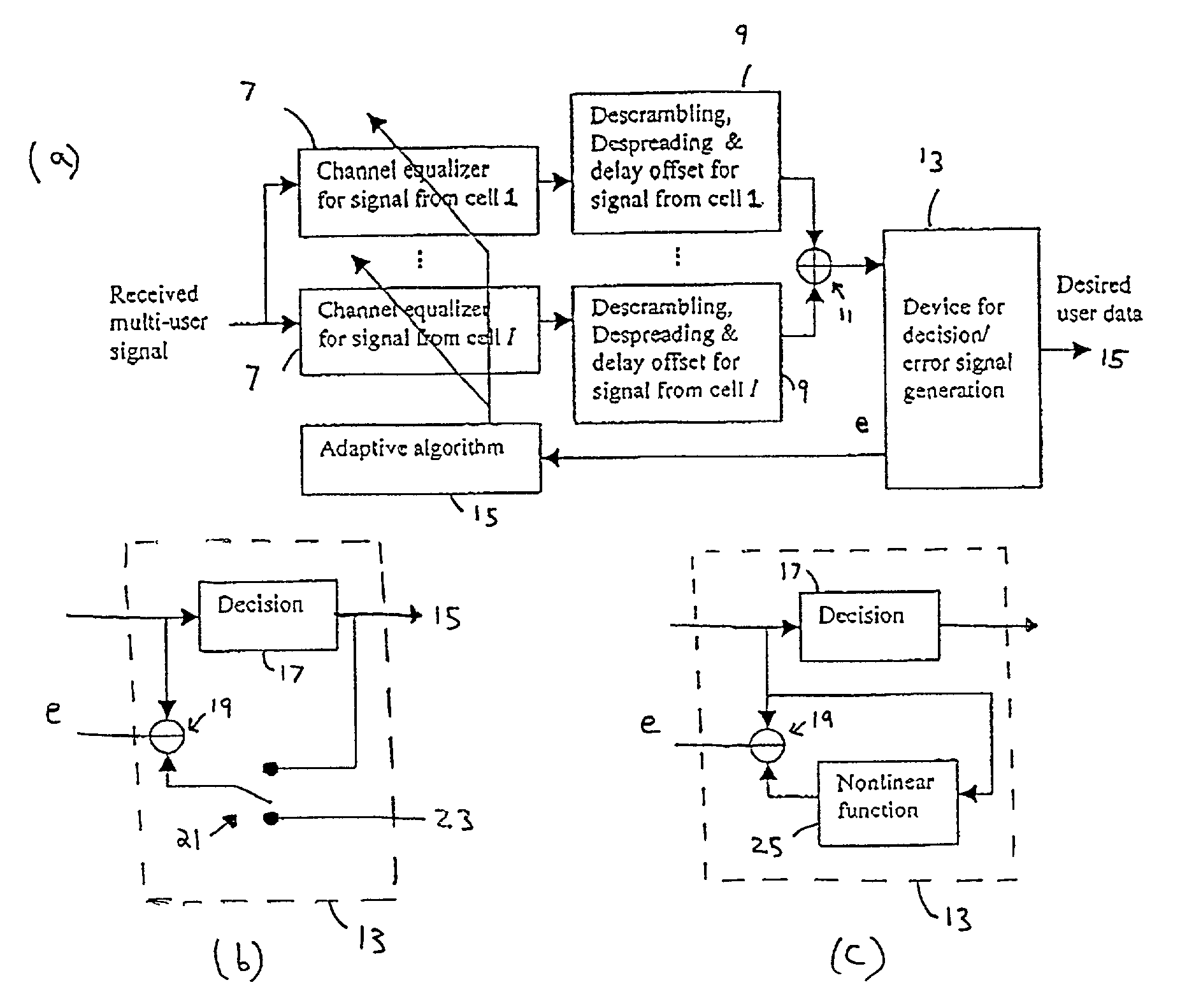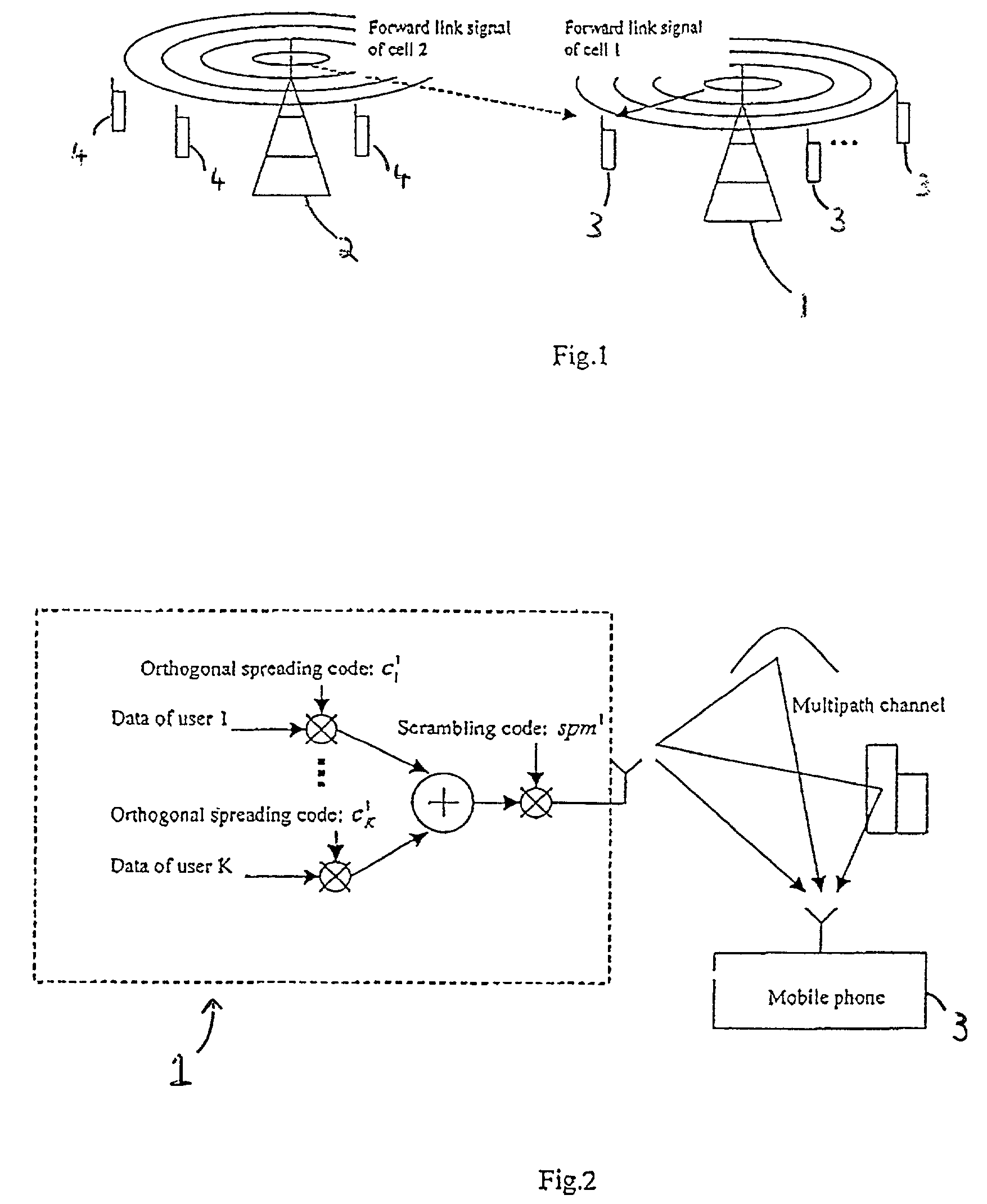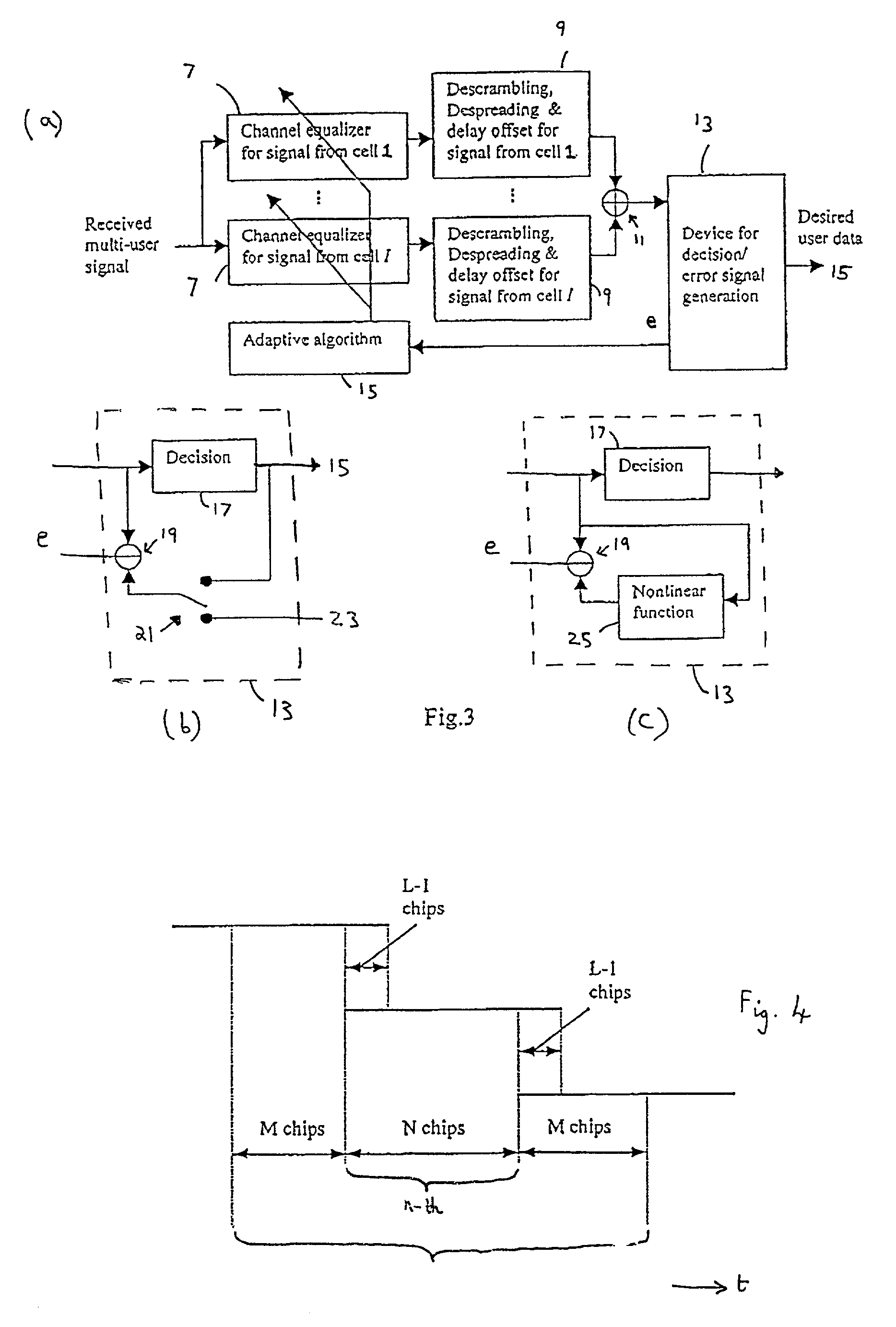Multiple-user CDMA wireless communication system
a wireless communication system and multi-user technology, applied in multiplex communication, data switching networks, wireless commuication services, etc., can solve the problems of multi-access interference, degrade the performance of the receiver, and interfere with the signal of multiple accesses, etc., to improve performance, and suppress intra-cell and/or inter-cell mai
- Summary
- Abstract
- Description
- Claims
- Application Information
AI Technical Summary
Benefits of technology
Problems solved by technology
Method used
Image
Examples
Embodiment Construction
[0041]In the following explanation of the embodiment, the number of base stations (or equivalently cells) from which a given receiver (user) can receive CDMA signals is denoted by I, and the base stations (cells) are labelled by the index i, i=1, . . . ,I.
[0042]The number of receivers of the transmission system is K, labelled by an index k, k=1, . . . ,K. The data bit for user k in cell i is denoted by bki. Note that when the user k is near the edge of a cell, during the soft hand over period, the data from several base stations is equal, and we can remove the superscript i. A mobile phone which is near only a single base station (e.g. that including cell 1) communicates only with its base station, and in this case the data for the k-th user in cell 1 is different from that in cell 2.
[0043]The CDMA signal is generated employing, for each of the K users, a respective spreading code Cki. Each spreading code is constant for time intervals called chips (i.e. with sudden changes only at ...
PUM
 Login to View More
Login to View More Abstract
Description
Claims
Application Information
 Login to View More
Login to View More - R&D
- Intellectual Property
- Life Sciences
- Materials
- Tech Scout
- Unparalleled Data Quality
- Higher Quality Content
- 60% Fewer Hallucinations
Browse by: Latest US Patents, China's latest patents, Technical Efficacy Thesaurus, Application Domain, Technology Topic, Popular Technical Reports.
© 2025 PatSnap. All rights reserved.Legal|Privacy policy|Modern Slavery Act Transparency Statement|Sitemap|About US| Contact US: help@patsnap.com



